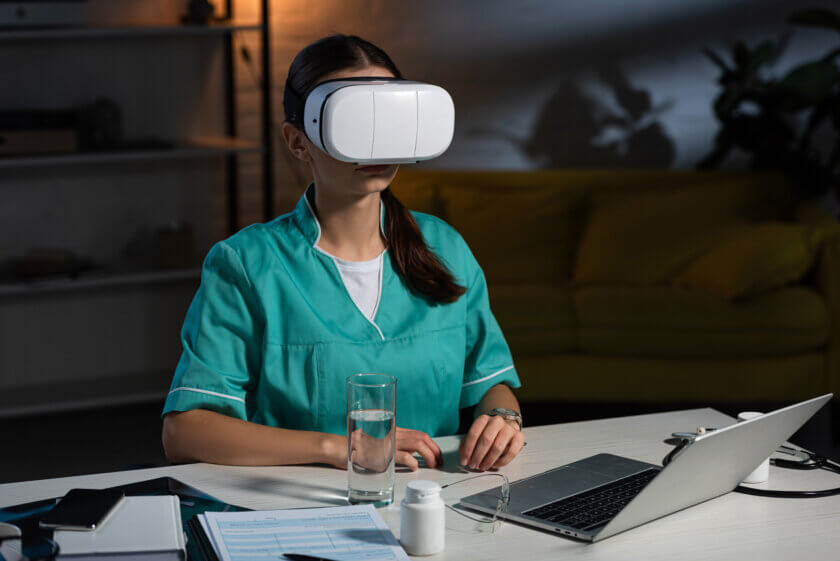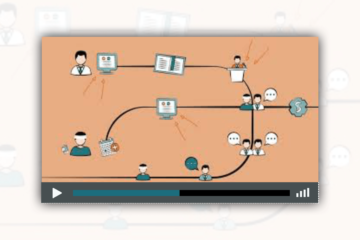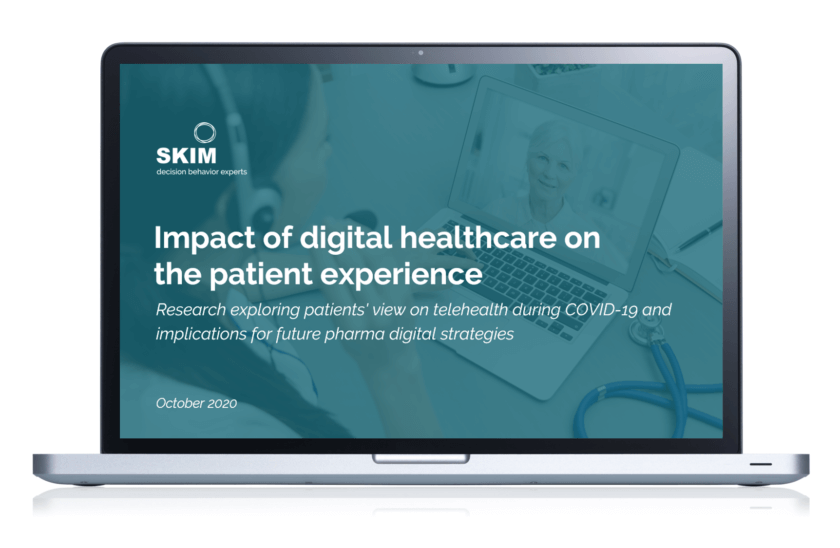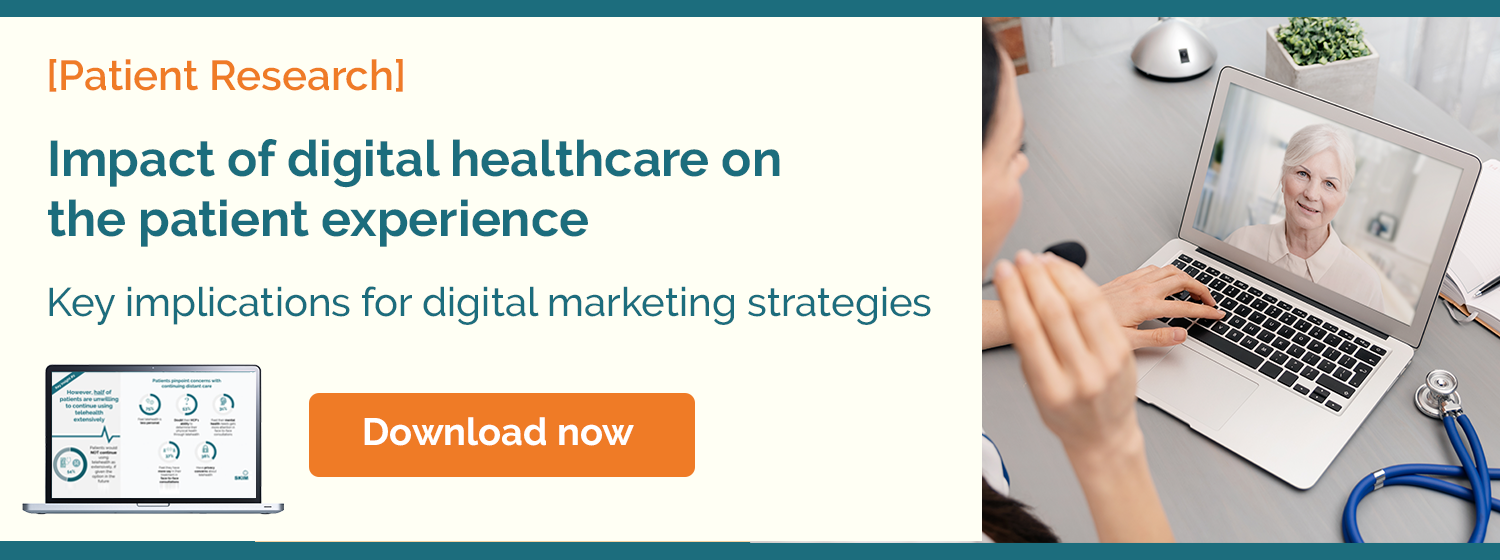The context for decision-making in the healthcare industry has been thoroughly disrupted – from patients navigating the world of telehealth to HCP’s increased reliance on online channels for knowledge gathering.
Despite this rapidly evolving environment, your mission as a pharma marketeer, continues: to enable value creation and product differentiation and empower both physicians and patients for improved outcomes. However, to do so effectively today, you need to understand how patient journeys are changing, and what new needs have emerged. Only by understanding the nuances of these shifts, will you be able to effectively adapt your marketing, communications and/or innovation strategies for greater impact now and in the long term.
Here we explore how disrupted decision behavior affects the physician and patient journey and considerations for adapting your strategies accordingly. Read on for recommendations on how to stay relevant along the entire care pathway and ahead of the competition today’s market.
Addressing shifts in patient information-seeking behavior to prevent delays in early care
The global pandemic led to a general feeling that anything non-COVID related is somewhat less important. This situation is driving new attitudes and behaviors in patients and results in overall delays in diagnosis.
What’s causing these delays? Patients may downplay non-COVID related symptoms as insignificant. Some may fear face-to-face consultations based on media coverage or conflicting messages from HCPs. While others attempting to “meet” with physicians may not be able to due to overloaded schedules. In the meantime, patients can become increasingly more aware of their symptoms and eager to take action.
They’re more likely to turn to other channels, including researching information and education online, e.g. via social media. As a result, the risk of making an incorrect assessment of the symptoms also increases.
The effect has a detrimental impact on the treatment path, treatment options and the clinical outcomes in the long run.

The fact that patients’ information-seeking behavior has intensified at the very beginning of the patient journey has direct implications on your marketing strategies. Understanding when, what and how patients search for information and ensuring they turn to reliable information sources becomes key in ensuring patients seek and receive timely care.
Consider these relevant questions for adapting your communications and messaging approach for this stage of the patient journey:
- What opportunities exist for you to drive earlier (or more timely) diagnosis?
- What type of education programs can better educate patients online or offline regarding diseases and symptoms?
- What online channels are patients frequenting for research or information?
The impact of digital healthcare on key journey touchpoints
Research suggests that face-to-face physician practice activity will return post-COVID, but to what extent is still uncertain. Since physicians were forced to adopt telehealth during the crises, they may be more willing to adopt the virtual care approach moving forward. A hybrid approach will most likely become a global “new normal,” incorporating digital platforms as an integral part of the care system. However, it needs to be examined how telehealth can deliver the same level and quality of care, without compromising patient outcomes.
As we progress in the patient journey, the adoption of telehealth in conjunction with face-to-face consultations, challenges the treatment decisions in different ways at key moments in the journey.
Less face-to-face patient consultations has a ripple effect, for example in performing diagnostic tests, setting the right diagnosis, assessing efficacy of treatments, or switching to different treatment lines.
Physicians have long contended with the challenges of relying on what patients do or do not communicate around the symptoms, treatment compliance, side effects, etc. We know how important HCP intuition is, especially for more experienced physicians: how much of this remains in a hybrid in-person/virtual care setting?
As different countries relax COVID restrictions, HCPs are likely to explore when and where they would choose telehealth to provide patient care. Understanding the impact of these considerations is important as you adjust your short and long-term marketing strategies.
In order to ensure you continue to play a relevant role in supporting healthcare providers in providing quality care and improved outcomes, you should be asking these questions:
- How can the format and means of communication be adapted to enable HCPs to guide patients in making their decisions?
- How can digital platforms/tools be more effective in helping to diagnose at a distance, monitor changes in patients’ conditions, assess treatment response/side effects, and ensure patient compliance?
- What educational gaps remain or emerge? Which channels and touchpoints are most preferred by HCPs now? How/where do they want to engage with pharma companies now?
Adapting treatment and monitoring phases with smart healthcare
With the increased use of virtual healthcare, patients and physicians are gaining more experience with the digitization of healthcare. During the pandemic, most tracking and monitoring shifted to remote means and both HCPs and patients were forced to embrace and rely on digital platform and apps. How will this affect future HCP behavior?

In recent years, pharma companies have been looking into developing digital tools to complement their products and tackle these challenges. Before COVID-19, smart features were not necessarily an essential product element driving prescribing behavior. However, increased use of digital tools and communication throughout the patient/physician journey during the pandemic, and the rising need for disease prevention in general, have made smart features more important to therapy choice.
This means smart technology (e.g. fitness, mental health and nutrition apps, sleeping pattern monitoring or blood pressure trackers) could shift from a “nice-to-have” to a “must-have” feature.
- How have physician and patient perception and usage of smart tracking tools changed since COVID-19?
- What are potential barriers for increased use of smart healthcare, e.g. have privacy and data concerns lessened or increased due to telehealth?
Uncovering insights related to smart technology features should be a priority. Your company needs to embrace this time for innovation and prepare to address patients’ and physicians’ needs in the future. Determine the shifting perceptions, expectations and requirements from both patients and physicians will help guide your innovation plans.
Reshaping pharma research strategies following disruption
The emerging “new normal” in healthcare means you should reevaluate your research strategies. Depending on where your product is in the treatment flow, you will want to ensure that it is optimized for that segment of the physician/patient journey. Here’s how you can start.
1. Reshape existing research for a more accurate and current picture of the treatment journey

Your existing insights delivered at least three months ago may not be relevant in the current situation. Consider updating your patient journey and learn what has changed during COVID, what remains, and how this can shape HCPs’ and patients’ choices.
While some pre-COVID behaviors will return to ‘normal,’ new habits (e.g. when and where patients seek information and when physicians consider telehealth) may have a long-lasting impact.
2. Be aware of shifted priorities for your innovation pipeline
Staying ahead of emerging priorities will fuel innovation and help in value creation and create differentiation. In early-stage development, determine what may or may not be considered ‘essential’ features or aspects in the digital treatment context. In later-stage development, determine how you can optimize or better position more desirable features to stay relevant and set your product apart.
3. Introduce digital tools, content and education to address emerging needs
This could mean providing smart technology to help physicians/patients monitor and track disease more effectively or to educate patients on their treatment options. Also, ensure the required information is available to be shared and used digitally. Above all, consider how you use digital methods for treatment and communication, including re-optimizing your strategy for the current context.
—
Today’s physician and patient journey has been impacted in several ways:
- The interaction between the HCP and the patient is reshaped
- Key treatment decision moments are disturbed
- New needs are emerging for both patients and HCPs
Want to know how patient and physician journey mapping could help you tackle these changes?  to find out how we can help you thrive in the new normal.
to find out how we can help you thrive in the new normal.



